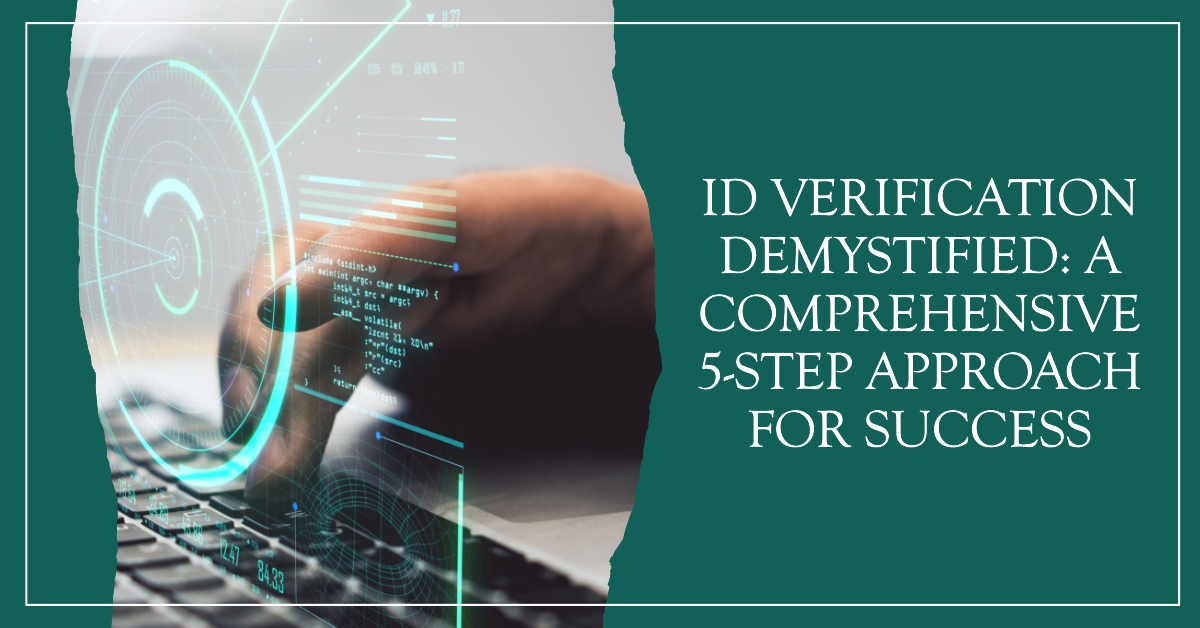The more sophisticated technological advancement is brought to the digital landscape, the more complicated and complex the security threats are posing to online business activities.
Security is a serious concern to companies and businesses operating online, more so when digital activities can be carried out from anywhere around the world. Companies with digital presence are visible worldwide. They have customers and audiences across the globe.
This has posed an identity challenge to digital operations and has created opportunities for internet fraud across borders. Identity theft has become rampant. Online businesses must devise ways to prevent their businesses by identifying all their clients, customers, and individuals transacting business activities. This article will attempt to demystify identity verification and offer a comprehensive 5-step approach for successful authentication.
Introduction to ID Verification

Identity verification simply verifies that the person standing before you is who he claims he is. It’s a method to prove that the documents presented by a person are authentic or they are valid.
Establishing authenticity involves using essential automated tools to scrutinize an applicant’s documents, such as driver’s license, national ID card, passport, etc.
With the rise in internet fraud, ID verification has become a compulsory process every business should undertake to check identity theft and online scams.
The 5 Crucial Steps To Demystify Identity Verification
Businesses struggling with the authentication of their customers can heave a sigh of relief because they now have a simplified and comprehensive process of verifying their clients successfully.
1. Establishing Identity And Authorization
In attempting to verify an individual’s identity, the first step is to ensure that the person is who they claim to be. This is the foundation stage of ID verification.
At this stage, you must collect the prospective customer’s personal information such as name, address, phone number, date of birth, social security number (where applicable), etc.
Customers fill out a pre-engagement form that will enable them to voluntarily offer their details. This way, you can begin the process of verification. This is a very crucial step because it is upon this information that all other steps can proceed.
2. Document Authentication And Validation
In this second stage, the customer presents their valid identity cards for validation. The most widely accepted documents for identity verification are usually government-issued identity cards.
By submitting their driver’s license, voter’s card, national identity card, social security number, etc., you can manually cross-check the validity and authenticity of such documents.
However, a physical examination of these documents may not provide enough information about their genuineness. This is where the technologically automated tool is required for their authentication.
The advanced automated system helps to check forgery and any form of alteration. The automated systems already have the template of most counties’ identity systems, making it easier to identify forgeries.
3. Data Cross-Checking And Verification

Data cross-checking is key to verifying someone’s identity. This is a process of painstakingly rechecking all the documents submitted by the prospect by using various sources and advanced tools to verify the authenticity of documents.
Scrutinizing the available information using powerful techniques and methods other than the one originally used to issue it can help detect inconsistencies and fraudulent practices.
Cross-checking information includes name, date of birth, address, etc. Cross-checking these documents enables you to establish the uniqueness and consistency of the applicant’s documents. This way, you can quickly identify errors.
This process is vital because it helps minimize the risk of impersonation and prevent identity theft and other fraudulent intentions.
4. Risk Analysis And Assessment

The primary purpose of carrying out a comprehensive assessment is to identify the risk level of a prospective customer before engagement.
After scrutinizing and cross-checking the submitted documents, the next thing will be to thoroughly analyze them. Risk analysis and assessment help to identify the potential risks and threats the prospect may pose to your organization.
Risk analysis and assessment must be carried out in line with relevant laws and regulations. By this, you can ensure total compliance with the established government standards. Your company’s reputation may be at risk If you don’t conduct a proper risk assessment.
A proper risk assessment of a customer helps to bring confidence and trust to both parties and also provides proof that your company is protected from any possible identity fraud.
5. Finalizing The Verification Process

After considering and reviewing all the steps highlighted above, you must make an informed decision. If the customer passes all the security tests, they can be onboarded.
The verification team will have to make a decision based on the result of their final analysis of all relevant data collected from the prospect. Any error at this stage can cause a serious security breach, damaging or harming the organization.
Your company wants to ensure that only legitimate customers and clients are allowed access to your products and services.
Conclusion
The identity verification process is not as difficult as you may think. With the proper steps, you can demystify the approach. And once you’re able to establish the authentication, the prospect can be eligible for onboarding without any fear of identity fraud.
If your business is having difficulties with its identity verification, it is hoped that this article has removed the mystery behind the process. This comprehensive 5-step approach can help you overcome the verification challenges and protect your business from fraudulent activities.
